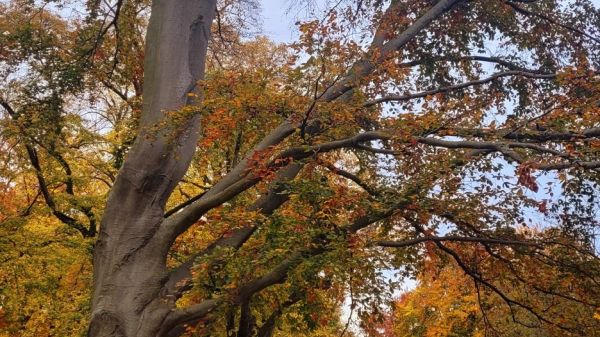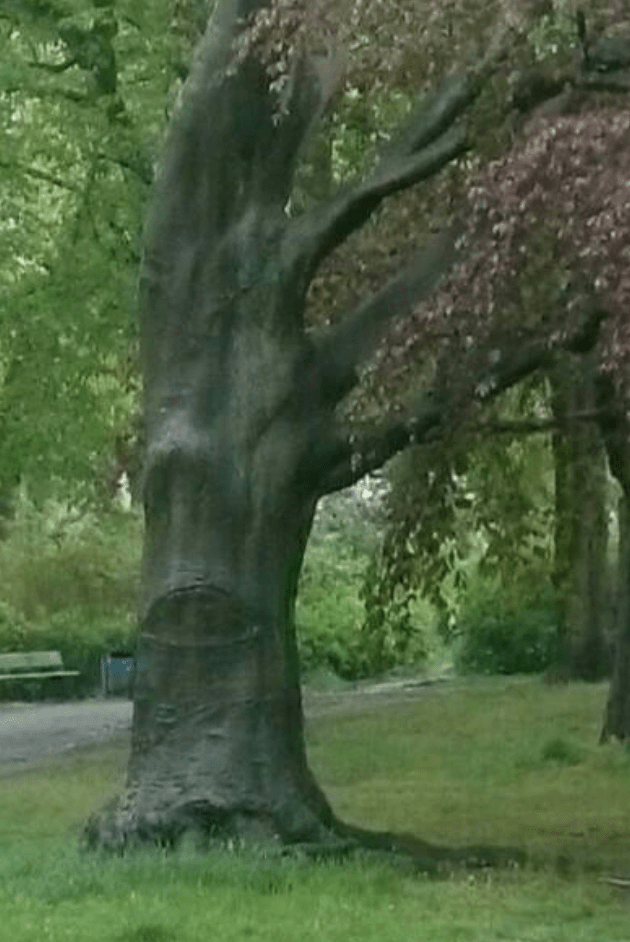The Age of Trees

"The Age of Trees" was written by guest writer Hartmut Neidlein on LinkedIn and is shared with permission on eePRO. Hartmut Neidlein is a certified expert for tree safety and a consultant for various tree concerns in Germany. For more information, please visit their website.
Trees are often referred to as "old" even though they are not yet. The lifespan of a tree exceeds ours enormously.
Of course, there are differences between the different tree species. For example, softwoods (or fast-growing trees) usually live less long than hardwoods. In cities, most trees don't live nearly as long as they would in their natural environment due to the harsher conditions. For example, a 70-year-old oak tree in the city feels very "old." An oak tree could live for a good 800 years.
Today, for example, we convert the age of an oak into human years. To do this, we have established the following equation (this is of course only a rough comparison):
800 tree years equals 100 human years
A 50-year-old oak would only be 6 years old according to this equation. This is similar to a child starting school.
At 200 years old, the oak would be the equivalent of 25 years old and thus a very young adult.
If the oak turns 520, it would just reach retirement age at the equivalent of 65.
And let's be honest: how often do you see a 500-year-old tree in urban areas? With a few exceptions in parks or cemeteries, this does not happen.
This comparison is intended to show how shifted our understanding of tree age is. It is important to improve the living conditions for trees in the city in such a way that significantly more make it into senior age. Future generations will benefit from it!
If you have pictures of trees you think are old, please share them in the comments under this blog.

This beech tree has certainly been watching the Messelpark in Berlin for a long time. Photo Credit: Jessica Baldwin
Knowing a translation does not always capture the nuances of language, the article that appeared in German as follows:
Oftmals werden Bäume als „alt“ bezeichnet obwohl sie es noch gar nicht sind. Die Lebensspanne eines Baumes übersteigt unsere nämlich enorm.
Zwischen den verschiedenen Baumarten gibt es natürlich Unterschiede. So werden Weichhölzer (oder schnell wachsende Bäume) meist weniger alt als Harthölzer. In Städten werden die meisten Bäume aufgrund der erschwerten Bedingungen nicht annähernd so alt, wie sie es in ihrer natürlichen Umgebung werden würden. So ist eine 70 Jahre alte Eiche in der Stadt gefühlt schon sehr „alt“. Dabei könnte eine Eiche gut 800 Jahre alt werden.
Wir rechnen heute beispielhaft das Alter einer Eiche in Menschenjahre um. Dafür haben wir folgende Gleichung aufgestellt (dies ist natürlich nur ein grober Vergleich):
800 Baumjahre entsprechen 100 Menschenjahren
Eine 50 Jahre alte Eiche wäre nach dieser Gleichung erst 6 Jahre alt. Dies ist vergleichbar mit einem Kind, dass in die Schule kommt.
Mit 200 Jahren wäre die Eiche umgerechnet 25 Jahre alt und damit ein sehr junger Erwachsener.
Wird die Eiche 520 Jahre würde sie mit umgerechnet 65 Jahren gerade so ins Rentenalter kommen.
Und jetzt mal ehrlich, wie oft sieht man im urbanen Raum einen 500 Jahre alten Baum? Bis auf ein paar Ausnahmen in Parks oder Friedhöfen kommt das nicht vor.
Dieser Vergleich soll zeigen, wie verschoben unser Verständnis in Bezug auf das Baumalter ist. Es ist wichtig, die Lebensumstände für Bäume in der Stadt so zu verbessern, dass es deutlich mehr ins Seniorenalter schaffen. Zukünftige Generationen werden davon profitieren!
Habt ihr schöne Altbäume in eurer Stadt? Wir freuen uns über Bilder
